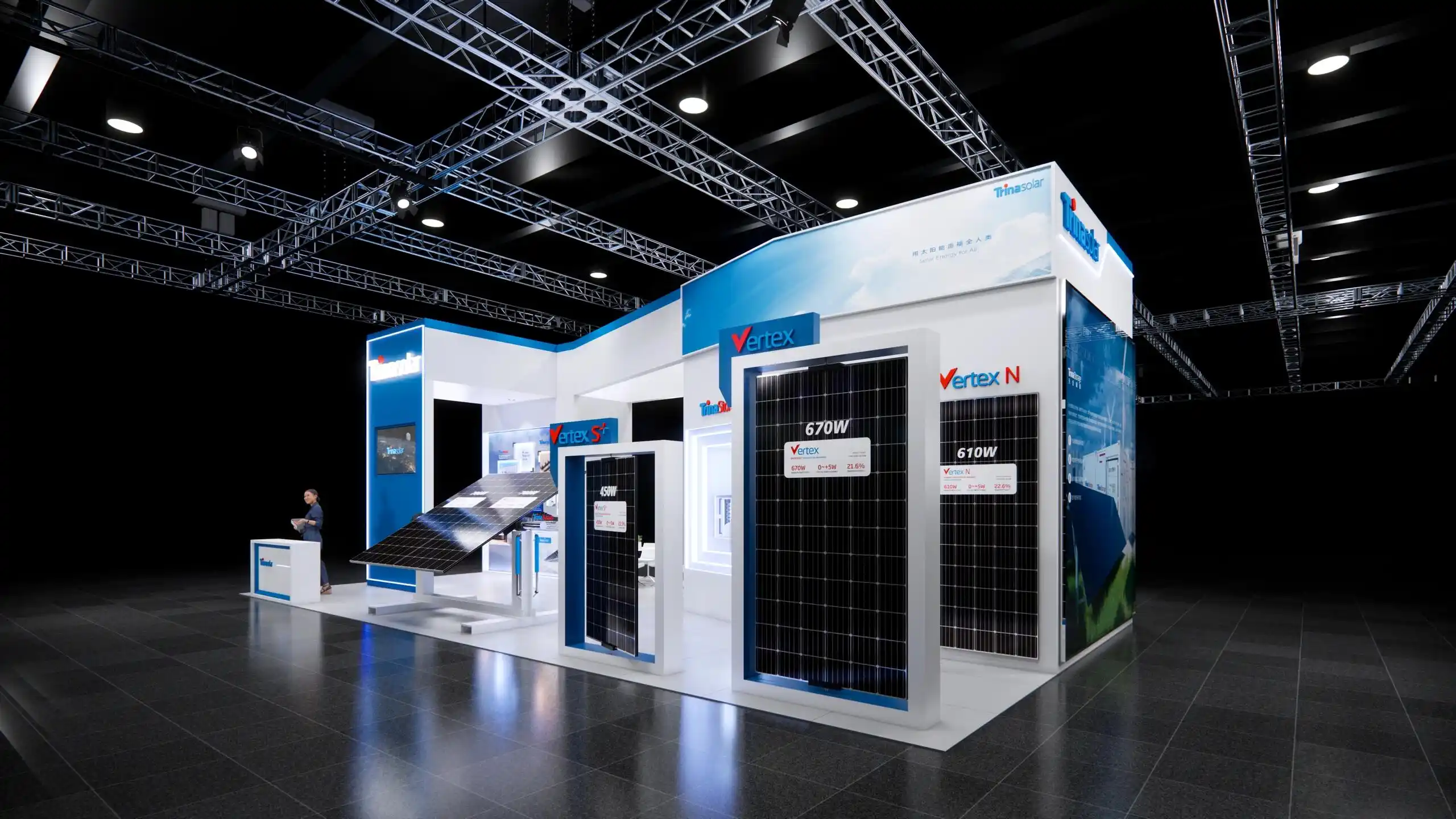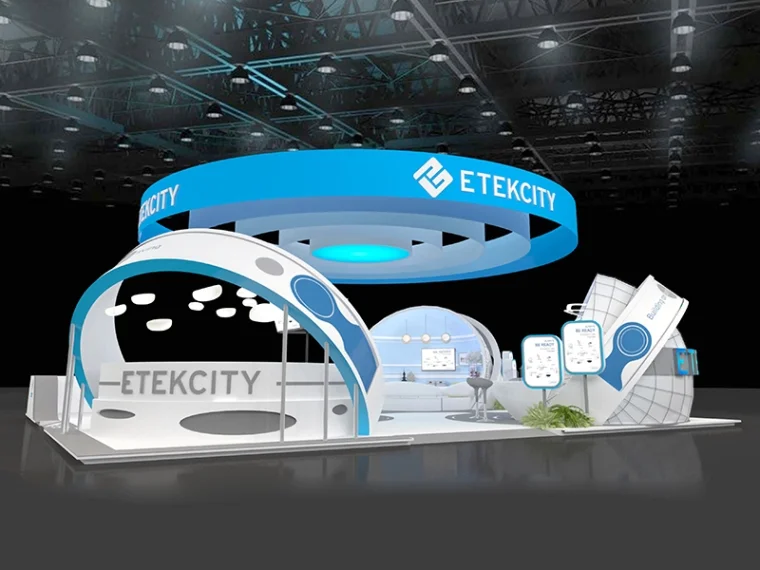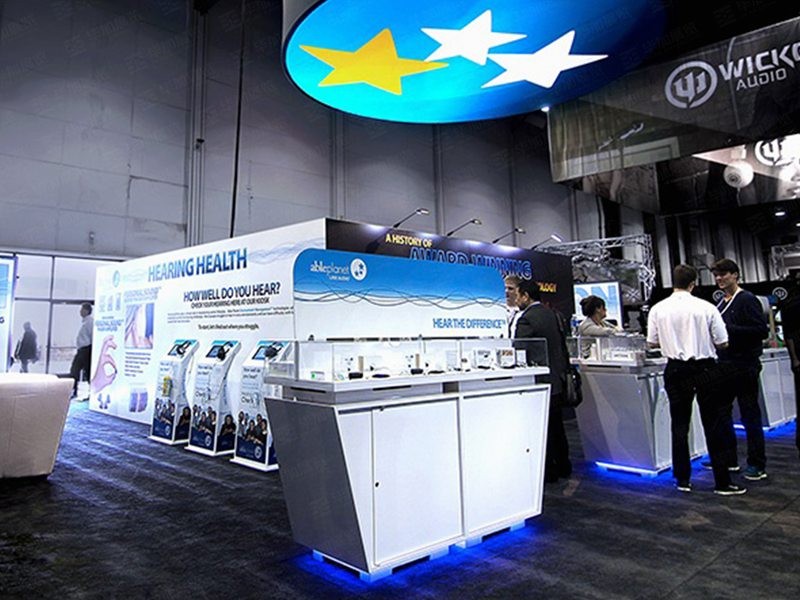The Consumer Electronics Show (CES) is one of the most anticipated technology events of the year, where companies from all over the world gather to showcase their innovative products, services, and technologies. Every year, thousands of businesses participate, aiming to capture the attention of media, buyers, and potential clients. However, with so many brands competing for attention, how can a company make sure that their booth stands out amidst the clutter? In this blog post, we'll explore effective CES booth construction strategies to ensure your display leaves a lasting impression.
Understanding the Importance of Booth Design
Your booth at CES is not just a space to display your product; it serves as your company’s first impression. It’s an opportunity to tell your brand story, engage with potential customers, and leave a memorable impact. A well-thought-out booth design is essential for grabbing attention in a crowded environment, fostering interaction, and promoting your brand identity.
A successful booth at CES can lead to increased visibility, more media coverage, and more connections with business prospects. But the competition is fierce, with thousands of exhibitors all trying to achieve the same goal: standing out. So, how do you differentiate yourself from the crowd?

1. Design with Your Audience in Mind
Before you even think about the construction and aesthetics of your booth, it's essential to understand who your audience is. CES attracts a diverse crowd, from tech enthusiasts and investors to industry professionals and media representatives. Your booth needs to appeal to the specific audience you're targeting.
Know Your Audience’s Needs
Do your potential customers want to see interactive demonstrations of your product? Are they looking for technical information, or do they prefer simple visual storytelling? Knowing your target audience will help you make informed decisions about your booth’s design and the experiences you want to create.
For example, if your product is consumer-facing, focus on engagement and experience, using interactive displays or hands-on product trials. If you’re a B2B company, you may want to design a space for more in-depth discussions and demonstrations, where prospects can see the value of your technology from a professional standpoint.
2. Incorporate Eye-Catching Visuals
In a sea of booths competing for attention, striking visuals are a must. You have mere seconds to grab someone's attention as they walk by, so make sure your booth immediately stands out. Whether it's through color schemes, bold logos, or futuristic designs, the visuals should capture your brand’s essence while being visually engaging.
Utilize Bold Branding and Colors
Your booth should be an extension of your brand’s identity. Use bold colors, distinct graphics, and clear signage that reflects your company’s style and message. Ensure that your brand logo is prominently displayed so attendees can easily identify you. It's also important to maintain consistency with your overall marketing materials—so your booth feels like a natural extension of your brand.
Lighting and LED Displays
Lighting plays a huge role in creating a mood and attracting attention. Use strategic lighting to highlight key areas of your booth. LED displays and lightboxes can be particularly effective, as they draw the eyes of passersby and can help make your booth stand out even in a sea of other displays. Dynamic lighting effects can also create an immersive atmosphere that intrigues attendees and encourages them to stop by your booth.

3. Create an Engaging and Interactive Experience
CES is all about showcasing technology, innovation, and products in new and exciting ways. Attendees expect more than just a traditional booth where products are displayed; they want to experience the product and see it in action.
Hands-On Demonstrations
One of the best ways to engage with your audience is through live, hands-on demonstrations of your products. Whether it’s allowing visitors to interact with your product, providing sample testing, or offering an immersive experience, demonstrations are a great way to spark interest and keep attendees engaged.
If you are showcasing a tech product, such as a smartphone or a new gadget, give people the opportunity to try it out for themselves. If your product is more intangible, such as a software solution, set up a live demo that shows how your product solves a problem in real-time. Make sure to train your staff to walk visitors through the demo and address any questions or concerns on the spot.
Augmented Reality (AR) or Virtual Reality (VR) Experiences
To truly stand out, consider incorporating AR or VR technology into your booth. These technologies allow visitors to interact with your products in a more immersive and memorable way. For instance, if you are showcasing a 3D model of your product, you can use AR to let visitors view it from different angles or even simulate its usage. Similarly, VR could be used to transport attendees into a virtual environment where they can experience your product in action.
By incorporating these technologies, you not only engage your audience but also create a buzz around your booth, as attendees are more likely to share these experiences with their colleagues or on social media.
4. Prioritize Open and Inviting Spaces
The layout of your booth is critical to ensuring that visitors feel comfortable entering and engaging with your display. An open, inviting layout can make a huge difference in foot traffic and overall booth success.
Keep It Open and Accessible
Ensure your booth design isn’t too cluttered. A clean, open layout encourages people to enter and explore. Avoid high barriers that block the view or make your booth feel like a closed-off space. Instead, focus on creating a flow that allows visitors to move freely, while ensuring there are areas for one-on-one discussions and private meetings if necessary.
In addition to the open layout, ensure there is enough space for people to comfortably interact with your product or engage with your team. Too many obstacles can make the experience feel cramped or overwhelming, which can lead to people walking away without engaging.
Comfortable Seating Areas
While the primary focus of your booth should be on your product, providing seating areas for in-depth conversations or rest can also be beneficial. Comfortable seating allows visitors to relax and take a moment to think or discuss your product with your team. This adds a level of comfort that can make your booth more appealing for those who want to learn more about your offering.
5. Utilize Technology to Enhance Your Booth
Given that CES is a technology show, leveraging the latest tech in your booth design can help you stand out. Aside from AR and VR experiences, there are many other ways technology can enhance your booth’s functionality and user experience.
Interactive Touch Screens
Including interactive touch screens where visitors can explore your products, watch videos, or learn more about your company can be a great way to engage visitors. Touch screens are especially effective when showcasing complex products or services that require more explanation, as they allow attendees to explore information at their own pace.
Data Capture Technology
During the event, it's essential to capture leads and gather valuable data. Integrate technology like QR codes, tablets, or RFID scanners to make lead collection easier and more efficient. By allowing attendees to scan codes to receive brochures or get more information about your products, you can streamline the process and avoid paper waste while still ensuring you collect relevant details for follow-up.

6. Effective Staffing and Customer Engagement
Your booth staff plays a pivotal role in ensuring your booth’s success. The way your team interacts with visitors can make or break their experience. Train your staff to be friendly, approachable, and knowledgeable about the products they’re representing.
Staffing Strategy
Ensure your staff members are well-versed in the product details and can answer technical questions. They should also be skilled at engaging visitors and creating memorable interactions. Remember, the goal is not just to talk about the product but to foster relationships that can translate into long-term business opportunities.
Having enough staff to handle traffic during peak times is also crucial. Consider having a designated person to manage appointments, answer questions, and facilitate demonstrations so your visitors have a smooth experience.
Conclusion
Building a successful booth at CES is more than just about having a pretty display. It’s about creating an engaging, memorable experience that showcases your brand’s innovation and captures the attention of potential clients, media, and investors. By focusing on clear branding, immersive technology, interactive experiences, and a welcoming layout, your booth can stand out in the crowded CES space. Ultimately, a well-designed booth will not only help you stand out at CES but also drive business growth, media attention, and valuable partnerships for years to come.
BIJIA EXHIBITION has exhibition production factories around the world, with a total area of 100,000 square meters. Our factories are located in European and American countries like Germany, the United States, France, and Italy. In Asia, they are mainly in Japan, Singapore, and Malaysia.
Our exhibition factories are equipped with a 5+N environmentally friendly production system and high-speed machinery. Boasting a workforce of over 800 employees, we ensure that projects are completed on schedule and help clients control both quality and costs.
If you have any need, welcome to contact us.
E-mail:yihao@bijiaexpo.com
www.bijiaexpo.com
BIJIA EXHIBITION